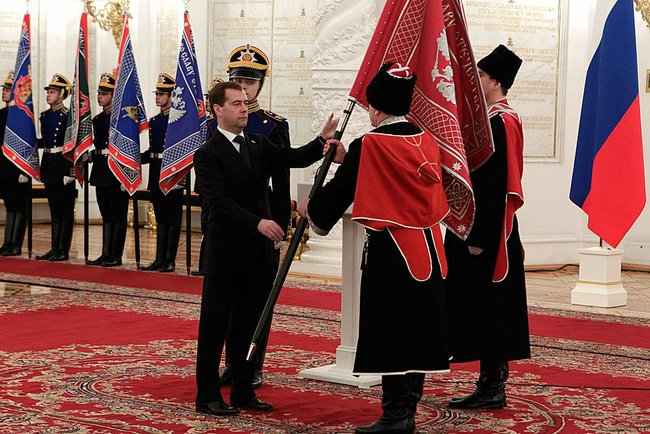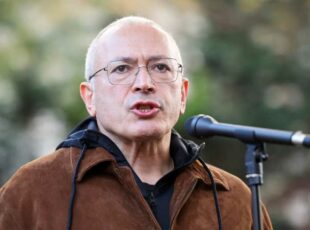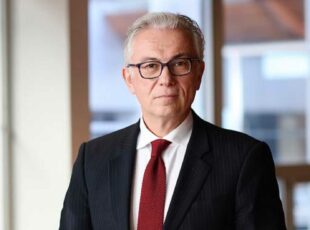A nation cannot be created from the top down
At the beginning of November, Vladimir Putin used a meeting of the Presidential Committee on Inter-ethnic Relations to speak of the need for a law on the Russian nation.

Natalya Gorodetskaya
At the beginning of November, Vladimir Putin used a meeting of the Presidential Committee on Inter-ethnic Relations to speak of the need for a law on the Russian nation. In the ensuing discussion practically all the experts on issues of inter-ethnic relations had their say. Opinions varied. Ildar Gilmutdinov (United Russia), head of the Duma committee on inter-ethnic relations, said that in the State Duma “there were discussions with expert groups and colleagues charged with developing the terms of reference to define what it is we want, how far the future law will go and what its content should be.” Commissioner for Human Rights Tatyana Moskalkova proposed that there should be “a referendum to decide the question of providing a legislative framework for the Russian nation.”
The Russian Federation is made up of 85 constitutional entities, known as federal subjects (this figure includes the Republic of Crimea and the federal city of Sevastopol). The entities include 46 regions, 22 republics, 9 territories and 2 other federal cities, Moscow and St Petersburg. According to the 2010 census, there are over 190 different ethnic groups and indigenous peoples, of whom the overwhelming majority (approximately 80%) belongs to European ethnic groups.
“A nation starts forming at grass root level and emerges as the result of a social contract made by a civil society.”
Rustem Vakhitov is a cultural anthropologist and political scientist from the republic of Bashkortostan [also called Bashkiria]. In his paper “Bashkiria: ethno-social groups in today’s Russia”, he writes that the situation in an enormous multi-ethnic country is very different from, say, France and Germany, so the creation of one single nation from the top down is an impossibility. “A nation starts forming at grass root level and emerges as the result of a social contract made by a civil society. This contract goes through the mill of discussions which contribute to the formation of a national identity.” He considers that in a stratified society where some categories of people – the men in suits or the men in uniform, for instance – have more rights than others, the government can only create ethno-social groups. This category is an “ethnic society to which the state grants privileges or resources, linking them to certain defined responsibilities.” The ethno-social groups (not unlike clans which can be bound together by shared commercial, administrative or, indeed, criminal interests) receive support from the state for national languages, schools, culture, media, and the scientific and creative intelligentsia. In return, they are responsible for keeping the peace between the various ethnic groups and remaining loyal to the government. Vakhitov points out that any failure to carry out these functions can lead to discrimination against the ethno-social group, or indeed its dissolution (as happened with the Crimean Tatars in 1944).
Vakhitov classifies ethno-social groups in each republic as the dominant ethnic group (including the key ethnic elites) or nation, which often give their name to the republic e.g. Bashkirs in Bashkiria, and the Cossacks [in the 18th and 19th centuries an ethno-social group, granted concessions by the Russian state for their guarding of the empire’s borders]. He notes that people may very well not actually belong to one or other ethnic group, but decide to join it because of the advantages it offers. Russians, to his mind, are not an ethno-social group, unless they are living in the national republics and have national organisations.
Two ideas are in conflict with each other in Russia today
Vakhitov considers that two ideas are in conflict with each other in Russia today: the creation of a single, united Russian nation in which everyone is equal (including in the eyes of the law), and the building up of ethno-social groups in a multi-ethnic population. This contradiction is even reflected in the eclectically-named programme for the implementation of government ethnic policy: “The strengthening of the unity of the Russian nation, and the ethno-cultural development of the peoples of Russia.” To his mind, Russia has taken the same path as the USSR, which succeeded in creating “not one single Soviet people, but a multi-ethnic ensemble of peoples with a variety of identities,” and “a system of ethno-social groups similar to the one under the tsars.” He prophesies that very soon the “government will once more be reinforcing the system of ethno-social groups and setting up registered ethnic groupings whose members will be carefully documented,” which will make the country easier to govern. “When dealing out privileges one has to know who to give them to, and who to hold responsible for fulfilling one or other function,” he says. “We have an oriental-type state where the supreme ruler delegates government to his vassals and this imperial system of government has not changed for 500 years.”
President of the Institute of National Strategy Mikhail Remizov thinks that it will be possible to create a Russian nation from the top down, but not by decree. “A nation is a political community, which can be created, but only by relying on a strong civil society and democratic institutions; improvements have to be made to the judiciary so that people can have confidence in the courts.” He notes that, “in every country nation-building has strengthened the state, but, as Professor Simon Kordonsky from the Higher School of Economics has written, cultural and ethnic diversity in Russia is something which sells well on the ‘administrative market’ with the bureaucrats themselves creating the demand.”
This article was first published in Kommersant



